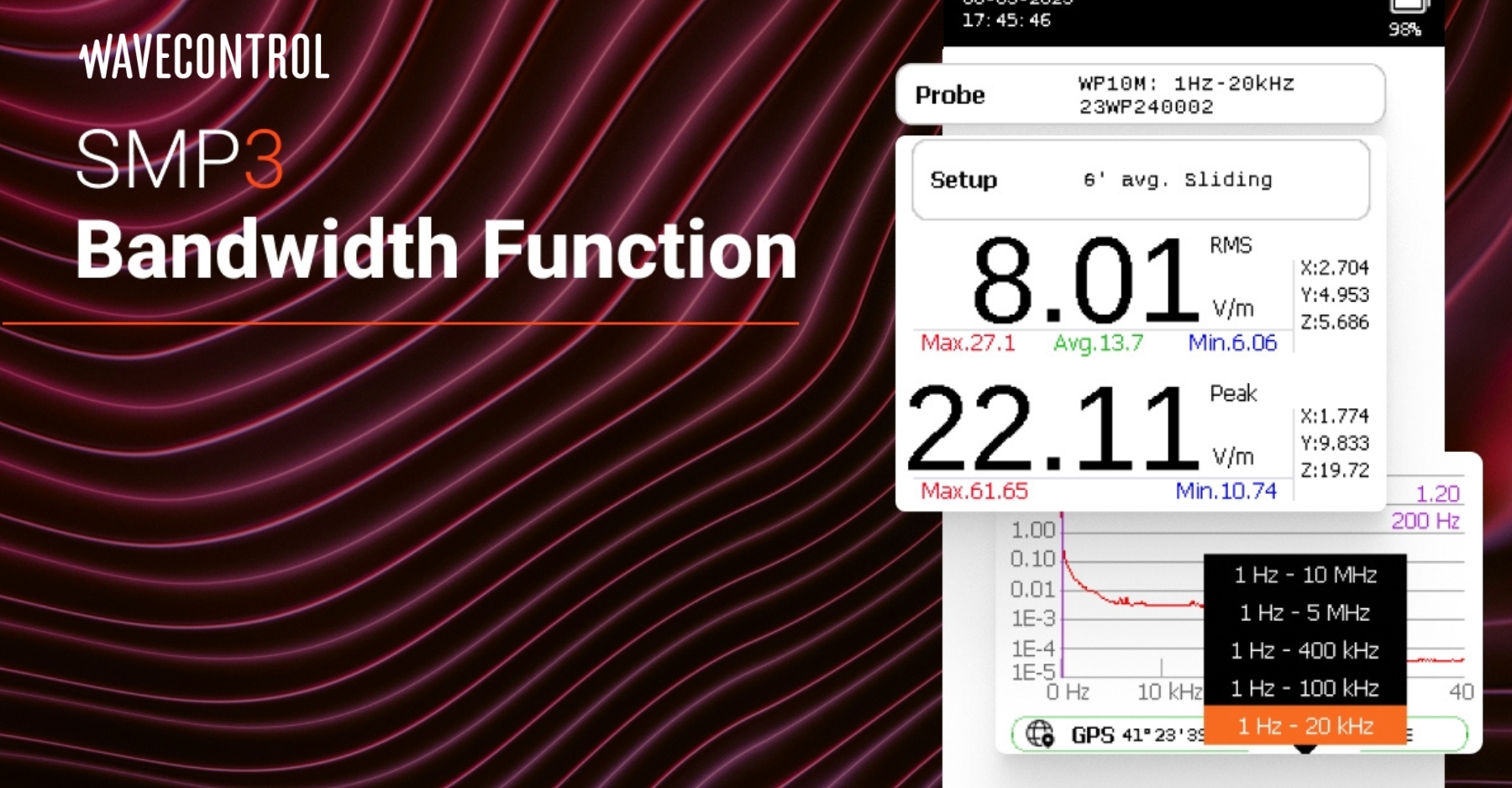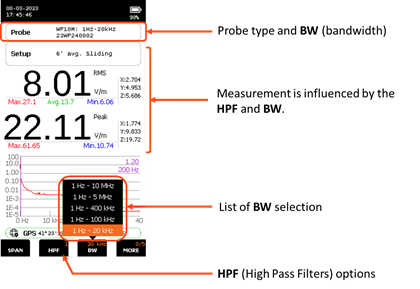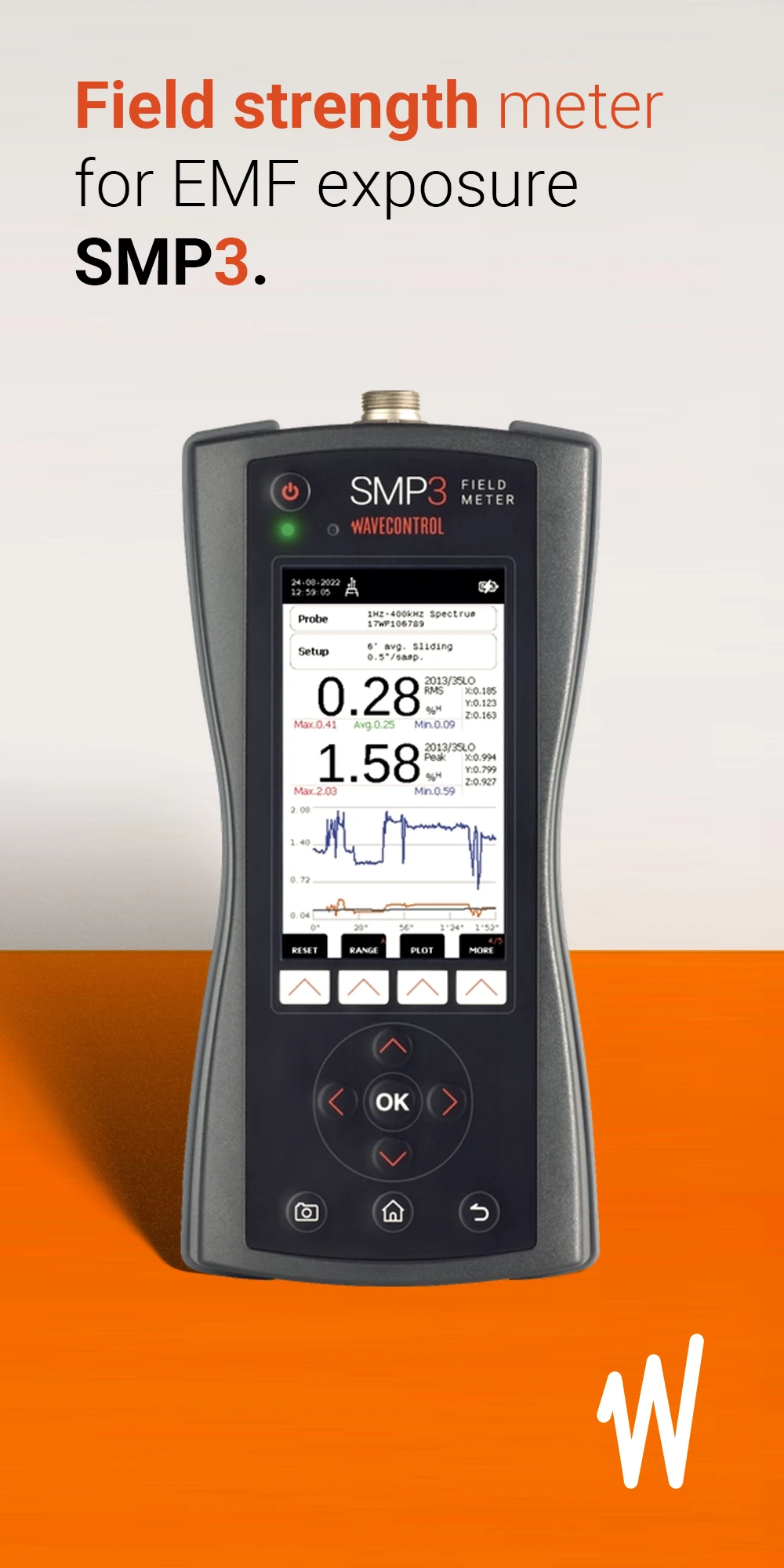SMP3 BandWith Function
The SMP3 introduces a new BW (Bandwidth) function which allows a user to choose the frequency range of the measurement.

This feature configures the maximum upper frequency measured by the device. This is selectable from a list of options in the dynamic menu BW.
Benefits of the new feature include:
Better standard compliance: Numerous standards set different frequency ranges for their measurement. An example is the railway standard, where measurement is required only up to 20 kHz. For exposure standards, IEEE C95-1 requires measurement up to 5 MHz, with the WP10M probe, a BW up to 5 MHz can be selected.
Compatibility with all selective probes: The BW function is compatible with all the selective probes from Wavecontrol. The available BW options (up to 20 kHz, 40 kHz, 100 kHz, 400 kHz, 5 MHz and 10 MHz) depend on the probe used:
- WPH-DC: up to 20 kHz, 40 kHz.
- WP400, WP400-3: up to 20 kHz, 100 kHz, 400 kHz.
- WP10M: up to 20 kHz, 100 kHz, 400 kHz, 5 MHz, 10 MHz.
Improved Frequency resolution: With the new bandwidth function a minimum frequency step of 0.1 Hz can be achieved to do FFT analysis at 16.7 Hz fields required for railway application in some countries.
Improved noise performance and better power consumption.

Figure 1: BW of 1 Hz – 20 kHz was selected. All the fields below or above the selected bandwidth are attenuated.



